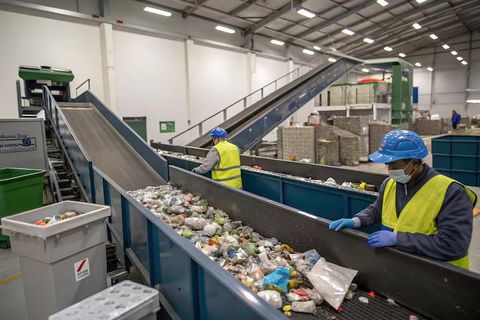Shaping the Future: An Overview and Guide to the Rise of Alternative Energy Sources
Alternative energy sources are forms of energy that do not rely on traditional fossil fuels such as coal, oil, or natural gas. They exist because global energy demands continue to rise, while concerns about climate change, pollution, and resource depletion are increasing. Alternative energy sources include solar, wind, geothermal, hydropower, biomass, hydrogen, and other emerging technologies designed to produce cleaner and more sustainable power.
As countries aim to reduce greenhouse gas emissions and adapt to long-term energy challenges, these energy systems offer a path toward stability, efficiency, and reduced environmental impact. They support diverse sectors — from households and transportation to manufacturing and national power grids.

Importance
Alternative energy sources matter today more than ever because they address some of the world’s most pressing environmental and economic challenges.
Key reasons for their importance include:
-
Environmental Protection: Renewable energy generates far fewer emissions, helping reduce air pollution and combat global warming.
-
Energy Security: Nations reduce dependence on imported fossil fuels by expanding their renewable energy capacity.
-
Long-term Sustainability: Many renewable resources, such as sunlight and wind, are abundant and naturally replenished.
-
Technological Innovation: Advances in energy storage, hydrogen production, and grid management encourage economic growth and new research opportunities.
-
Resilience and Reliability: Distributed renewable systems can reduce vulnerabilities during natural disasters or fuel shortages.
These energy sources affect a wide range of people — from energy producers and policymakers to homeowners, students, and industries adopting cleaner technologies. They solve the long-term problem of balancing global energy demand with environmental responsibility.
Recent Updates
The year 2024–2025 has seen significant breakthroughs and growing momentum in the alternative energy sector.
Some notable developments include:
-
Record solar and wind installations (2024): Many countries saw their highest renewable energy capacity additions, driven by improved technologies and national climate strategies.
-
Growth of hydrogen energy (2025): Hydrogen — especially green hydrogen — gained popularity as a clean alternative for heavy industries and long-distance transportation.
-
Battery technology improvements (2024): New lithium–sulfur and solid-state batteries improved energy storage, reducing dependence on grid fluctuations.
-
Increased adoption of microgrids (2025): Remote and rural regions are using microgrids to support stable and independent electricity systems.
-
Expansion of carbon-neutral goals (2024–2025): Countries continued implementing long-term net-zero strategies aligned with global climate agreements.
-
Offshore wind advancements (2025): Floating wind turbines gained attention, opening new possibilities for deep-water energy generation.
Reports predict continuous growth, with renewable sources expected to represent a majority of global energy additions through 2030.
Laws or Policies
Government policies and international frameworks significantly influence how alternative energy sources are developed and adopted.
Common regulatory areas include:
-
Renewable portfolio standards: Many countries require utilities to supply a minimum portion of electricity from renewable sources.
-
Emission reduction laws: Climate policies encourage clean technologies and limit greenhouse gas emissions across industries.
-
Tax incentives and energy credits: Governments may provide incentives to support renewable energy adoption, from solar panels to electric mobility.
-
Grid integration regulations: Updated rules help integrate renewable energy into existing power networks safely and efficiently.
-
Environmental impact assessments: Projects must meet environmental standards to protect ecosystems and communities.
-
International agreements: Global frameworks such as the Paris Agreement influence national renewable energy goals and strategies.
These policies guide the pace, structure, and scale of energy transition efforts in each region.
Tools and Resources
A variety of tools and resources support individuals, students, researchers, and professionals exploring alternative energy solutions.
Helpful tools include:
-
Solar and wind potential calculators: Online tools estimate renewable energy output based on location and climate.
-
Energy modeling software: Programs such as RETScreen and SAM help analyze renewable energy performance and design systems.
-
Government energy portals: Many countries maintain websites with updated renewable energy statistics, project guidelines, and regulatory information.
-
Electric grid monitoring apps: Provide insights into real-time energy mix, including renewable contributions.
-
Sustainability learning platforms: Offer courses on climate science, hydrogen energy, wind engineering, and sustainable technologies.
-
Carbon footprint calculators: Assist individuals and organizations in understanding their environmental impact and supporting cleaner choices.
These resources help users better understand renewable technologies, estimate performance, and make informed energy decisions.
Example Table: Key Alternative Energy Sources and Their Benefits
| Energy Source | Primary Benefit | Typical Applications |
|---|---|---|
| Solar Energy | Low emissions, widely accessible | Homes, businesses, large solar farms |
| Wind Energy | High efficiency in windy regions | Onshore and offshore wind farms |
| Hydropower | Reliable large-scale generation | Dam systems, rural electrification |
| Geothermal | Constant energy supply | Heating, cooling, power generation |
| Biomass | Utilizes organic waste materials | Heating, electricity, biofuels |
| Hydrogen Energy | Versatile, suitable for heavy industry | Manufacturing, transport, power |
FAQs
What are alternative energy sources?
These are energy sources that do not rely on fossil fuels. Examples include solar, wind, geothermal, hydropower, biomass, and hydrogen. They are considered more sustainable and environmentally friendly.
Why are renewable and alternative energy sources growing?
They help reduce emissions, improve energy security, and support long-term sustainability. Recent advancements in technology have made them more accessible and efficient.
Is hydrogen energy considered renewable?
Hydrogen itself is not renewable, but when produced using renewable energy (known as green hydrogen), it becomes a clean and sustainable energy option.
What challenges do alternative energy sources face?
Challenges include infrastructure needs, energy storage limitations, grid integration, and varying weather conditions that affect solar and wind output.
How can individuals contribute to clean energy adoption?
People can support renewable-focused policies, monitor their energy use, adopt clean technologies when possible, and stay informed through reliable energy resources.
Conclusion
Alternative energy sources are shaping the future of global energy systems by providing cleaner, more sustainable, and more resilient options for power generation. As countries continue investing in eco-friendly solutions, renewable technologies are becoming central to climate strategies and economic development.
Recent innovations — from hydrogen advancements to improved battery storage — highlight how rapidly the field is evolving. Policies, international agreements, and digital tools continue to support widespread adoption across industries and communities.






